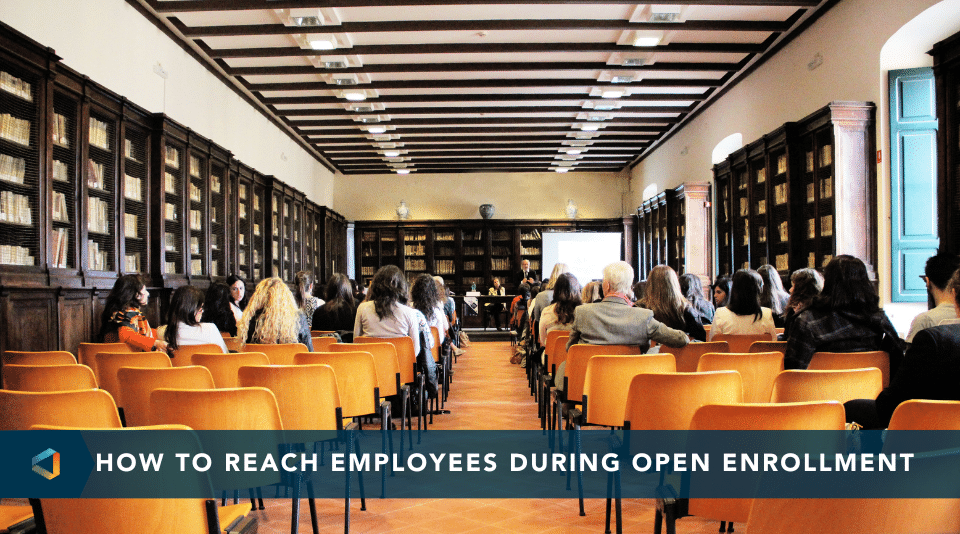Better Benefits
Connecting With “Deskless Employees” During This Unique Enrollment Season
Connecting With “Deskless Employees” During This Unique Enrollment Season
Six months into the pandemic, many organizations have transitioned some, if not all, of their employees to remote working environments and are catering their communication and engagement strategies to this “new normal.” But are the 2.7 billion “deskless workers” across industries like agriculture, education, healthcare, retail, hospitality, manufacturing and construction being left behind?
Deskless workers, some of whom have been historically referred to as “blue collar,” from factory workers and truck drivers to store clerks and servers, are a critical force in driving business and society forward. Yet employers are struggling to educate and engage these indispensable employees.
Most deskless team members can’t simply shift their working environment to a remote office during the pandemic, and according to a recent study, employers have work to do to reach this central workforce.
The study, “State of the Deskless Workforce,” an annual report by Quinyx, shows just how significantly COVID-19 has impacted this population, highlighting that one in four workers do not believe their employer has provided clear communications during the pandemic. The study also found that 35% of employees say their employer didn’t effectively communicate how to perform their job during the pandemic. For this section of the workforce, internal communications can be a major driver of engagement. Consider the impact on productivity, culture and your bottom line if you’re not reaching a pivotal component of your workforce.
There is a major communication gap between employers and their deskless workers. It’s time to debunk two myths that may be contributing to this mounting problem.
MYTH #1: Our employees do not have access to technology.
Although depending on region and industry, technology access may certainly be a hindrance, let’s consider that more than 90% of Gen Xers and Millennials, the majority of today’s workforce, own a smartphone. And across generations, employees are 75% more likely to watch a video than to read emails or documents. If you have an older workforce or one that has been reluctant to embrace technology in the past, by now you can feel confident your team is using technology in some capacity, if not to complete their work in ways they never have before, then at least to communicate with their loved ones and find comfort and entertainment during this quarantine environment. As a result, you can confidently explore new and innovative methods of communicating digitally with your team.
MYTH #2: Deskless workers jump from job to job.
According to the Quinyx, study, deskless workers are hungry for long-term jobs and career progression and, on average, 61% plan to stay at their company for up to three years. Since deskless workers make up 80% of today’s workforce, it’s imperative to adjust your communication strategy to connect with these employees.
With fourth quarter rapidly approaching and open enrollment top of mind for many organizations, it’s the perfect opportunity to take a step back and assess whether or not your communication strategy will effectively engage your deskless workforce and “blue-collar employees,” during both enrollment season and beyond. Incorporate the following techniques as you conceptualize your communication strategy.
-
Develop a year-round, multi-channel approach.
Consider your target audience and incorporate a variety of digital modalities. This may include email, text, video, call centers, benefits portals, interactive benefits guides, intranet and more.
-
Incorporate a tone of compassion and empathy.
Meet your employees where they are and frame benefits in the context of their lives and circumstance. From the top-down, employees should be assured that you are all adjusting to this new normal together.
-
Communicate clearly and often.
The average attention span is 8 seconds. For optimal employee engagement, communicate upwards of 26 times per year. 80% of organizations reported their employees never even opened their benefits guide last year, so be sure to vary your approach and deliver benefits information as visual and bite-sized.
The unique communications challenges COVID-19 introduced also provide a chance to transform the way you approach benefits communication and education. It’s important to remember that engagement cuts across all ages, verticals and demographics and it’s time to reinvest in the future of the deskless worker.
For additional resources on creating an engaging open enrollment experience, visit the OneDigital Open Enrollment Hub.




